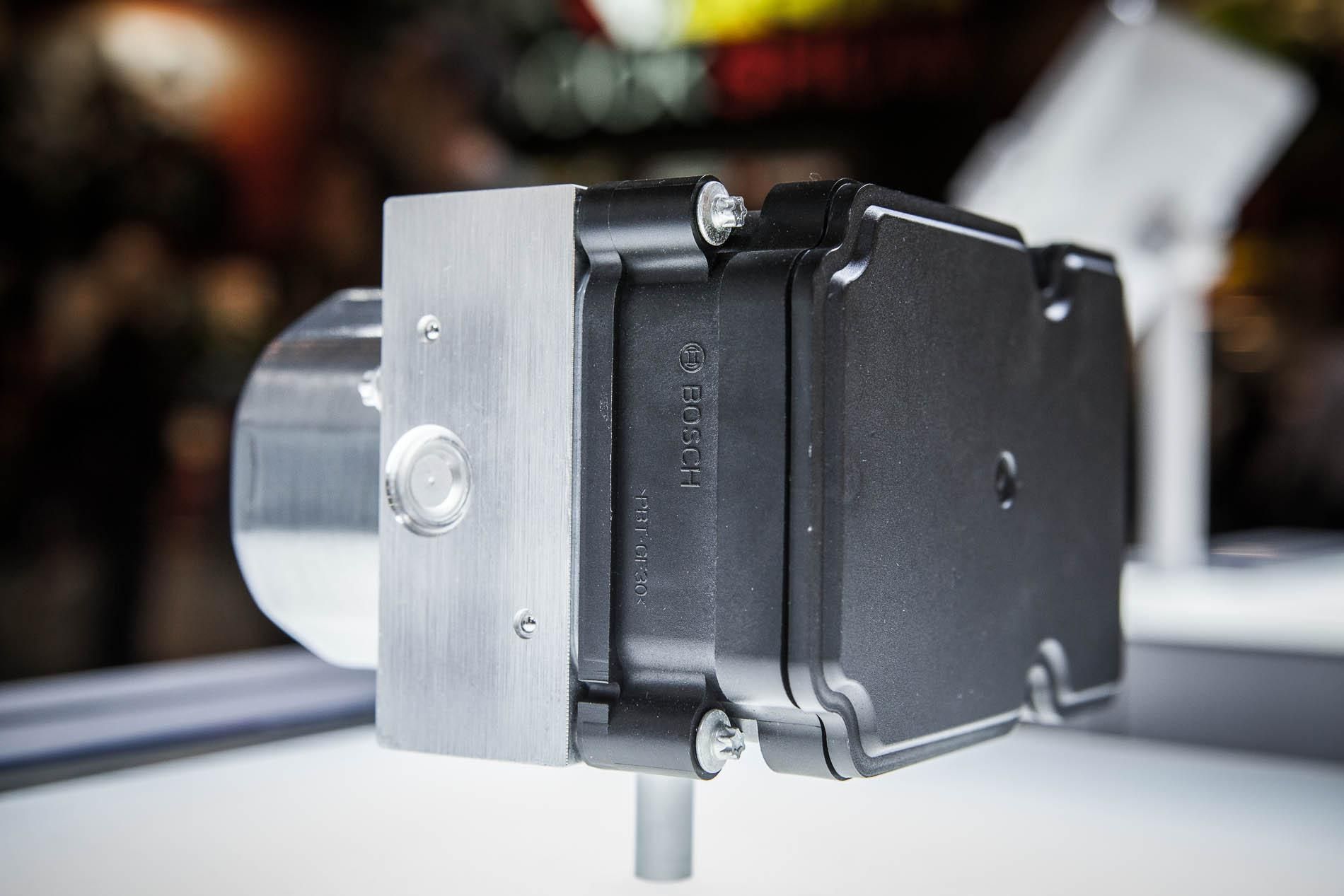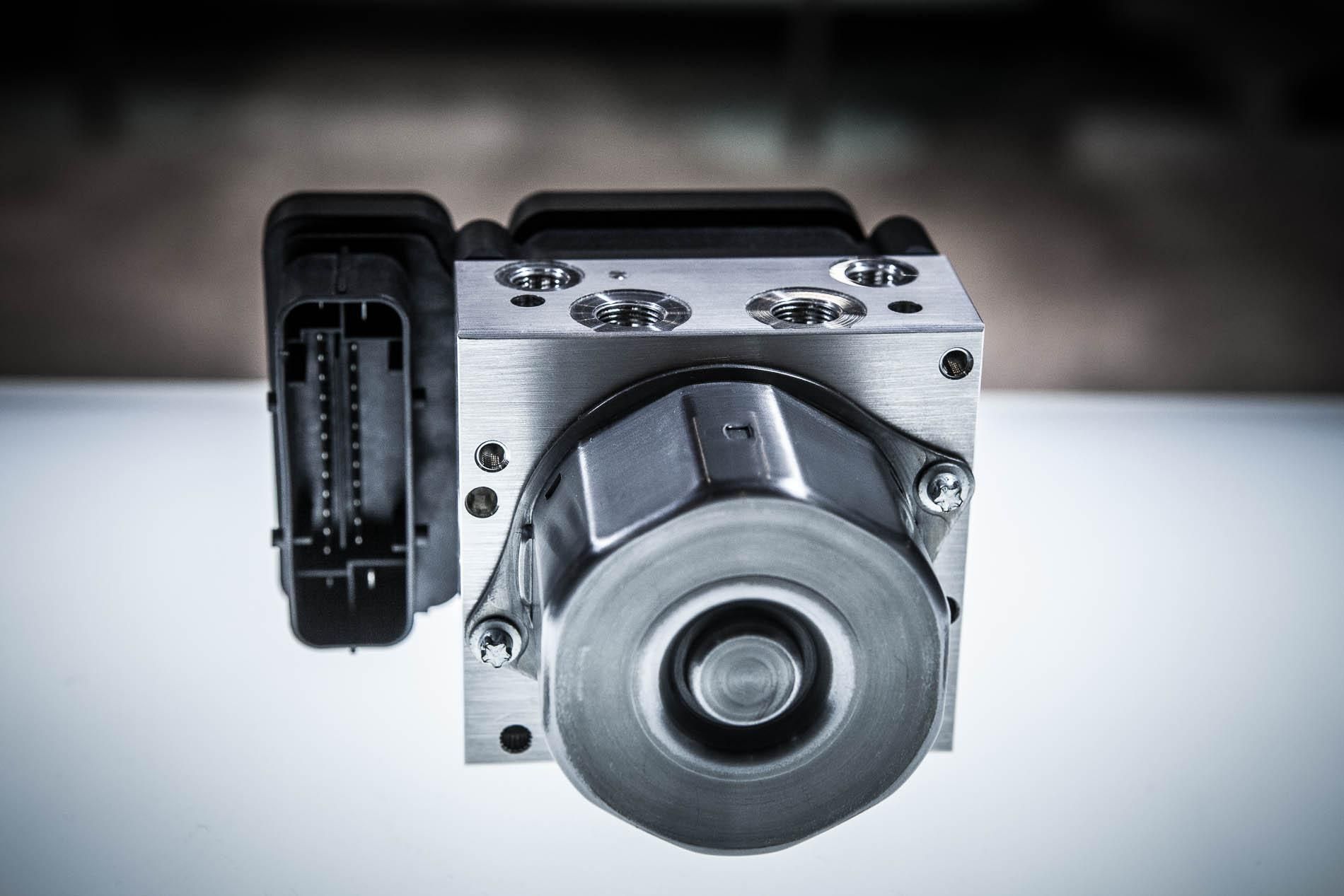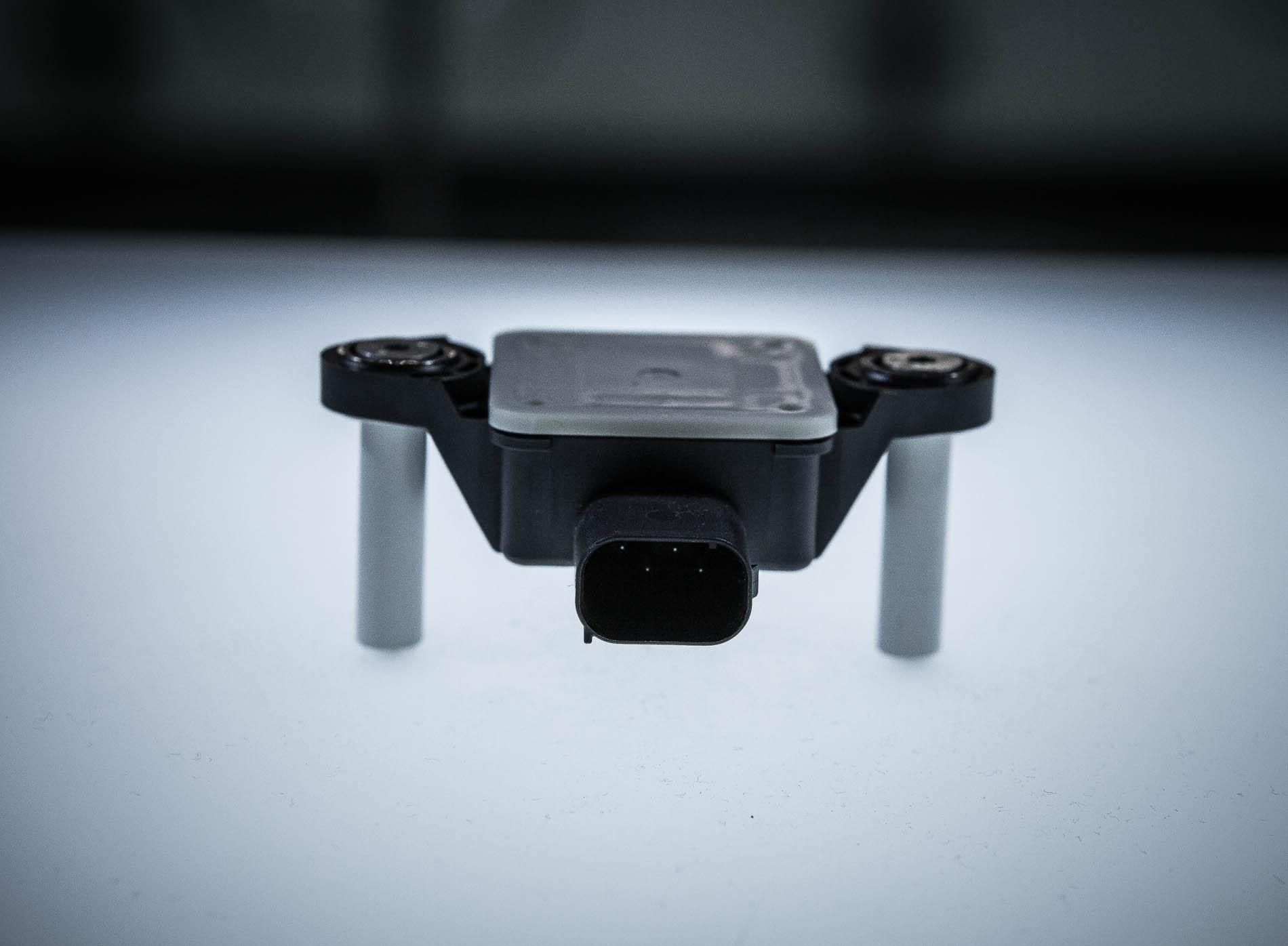Bosch & KTM Introduce MSC - Enhanced Electronics To Keep The Rubber Side Down

Bosch ABS Component
Anti-lock Braking Systems (ABS) can be found on the majority of (on-road) production motorcycles these days. First developed for aircraft use in the late '20's, ABS is all about maintaining control of a vehicle under braking - preventing wheel lock-ups and uncontrolled skidding. On motorcycles, ABS actually dates back as far as 1958 when it was first tested on a Royal Enfield Super Meteor. It wasn't until BMW released the K-100 series in 1988 that ABS started to make it's way into the world of production motorcycles. At the time, motorcycle ABS packages were adapted from cars and were heavy - adding an additional 11 kg of weight to the bike. Definitely not ideal. Today, motorcycle ABS packages weigh a faction of what they used to and have been developed specifically to meet the demands of motorcycles. Together with traction control, motorcycles now benefit from advanced electronics that vastly increase both safety and performance. While the debate remains on whether or not such rider aids alter the essence of riding a motorcycle (the old adage of one's right wrist being your traction control), there is no doubt that these systems are here to stay and will continue to get increasingly advanced.
The 2014 KTM 1190 Adventure will be the first production motorcycle with Bosch's new Motorcycle Stability Control (MSC), a combined traction control and anti-lock braking system. So what's different about MSC? In addition to the typical wheel speed sensor data, MSC also analyzes data from a lean angle sensor in order to properly apply these aids while cornering. Essentially, it's the next evolution in motorcycle ABS.

2014 KTM 1190 Adventure - The First MSC Equipped Motorcyle
How it works:
MSC uses an extensive array of sensors to register the driving dynamics of the motorcycle. Wheel sensors measure the rotational speed of the front and rear wheels, and an inertia sensor module computes the vehicle's lean and pitch angles more than 100 times for second. By analyzing the sensor data, the difference in speed between the front and rear wheels, and other motorcycle specific parameters such as tire size, tire shape and sensor location, the MSC unit calculates the physical limits of brake force on the basis of lean angle. If the MSC unit recognizes that a wheel is starting to lock, it activates the pressure modulator in the hydraulic brake system. This lowers the brake pressure and then builds it up again within a fraction of a second, resulting in exactly as much brake pressure being applied as is necessary to keep each wheel from locking and minimizing stopping distance.
In off-road riding scenarios, the system has also improved. Previously, the unique characteristics of riding on loose surfaces wasn't accounted for in ABS and TC systems. In the off-road control, slip thresholds and other parameters have been adjusted to allow more slip between the tires and riding surface. The rear wheel can dig into the track surface, improving braking performance on rough terrain and the front wheel control allows stronger deceleration without any negative effect of overall stability.

Bosch MSC - ABS Unit

Bosch MSC - Lean Angle Sensor
What does it mean to riders:
While existing ABS packages do a great job of controlling brake modulation for you while the motorcycle is moving in a relatively straight line, they don't perform well when the bike is leaned over in a curve. Take a common lowside scenario for example - you enter a curve at what you think is the correct speed, you get the bike leaned over and start heading toward the apex of the turn only to realize that you've misjudged your entry speed and don't think you'll make it, you panic (bad move) and grab a handful of brake (too much), the tires can't transfer that force into the road and the bike falls away from you and you hit the pavement, sliding together towards the outside of the curve. Equipped with MSC in the same scenario, at the moment that you grab those brakes, the system would take the lean of the motorcycle into account and apply the correct amount of brake pressure to keep the bike settled through the curve. It's also a combined braking system, meaning that if you grab too much front brake the system can correctly redistribute braking to both the front and rear brakes.
These advanced rider aids will no doubt continue to be met with resistance from a lot of riders. Not everyone wants their motorcycle to be able to take this much control of their brakes and throttle. There is also the question of diminishing rider skill - if a motorcycle can help "save stupid" (though only so far of course, some rider errors can't be saved by any amount of electronics), is that really a good thing? At the end of the day though, the statistics don't lie -- advanced rider aids such as ABS do in fact make for a safer motorcycle. Is the 2014 KTM 1190 Adventure now the safest motorcycle on the market? Perhaps, at least on paper, it is.
You must be logged in to comment
Login now